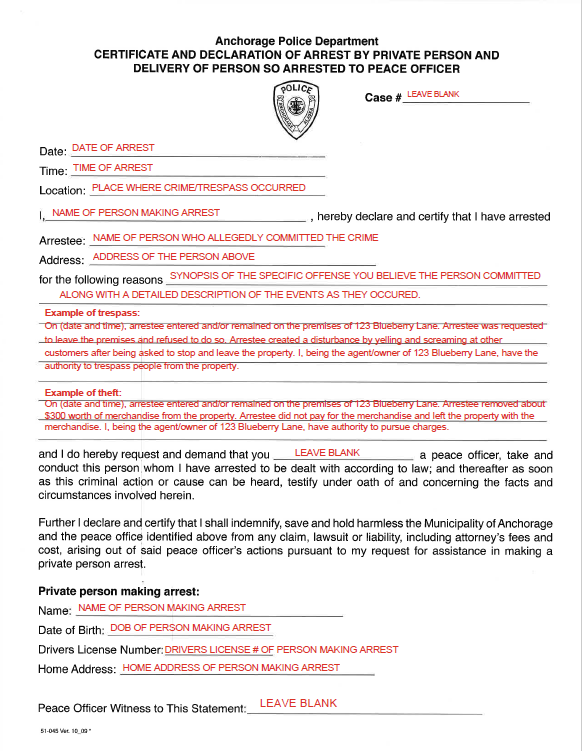private person arrest form
This form is used for certain misdemeanor crimes that occur outside of police presence.
Examples include:
Theft (shoplifting, stolen items under $750)
Assault (not domestic violence related)
Trespassing
Vandalism (such as broken windows or graffiti)
You would use this form when you want to press charges against someone who has allegedly committed one of these misdemeanor crimes, and either:
The person is still on scene, or
You know who the suspect is.
This form is not for domestic violence incidents and not for felony-level crimes. (Felonies involve theft or damage of more than $750 and assaults with serious physical injuries or the use of a weapon.)


